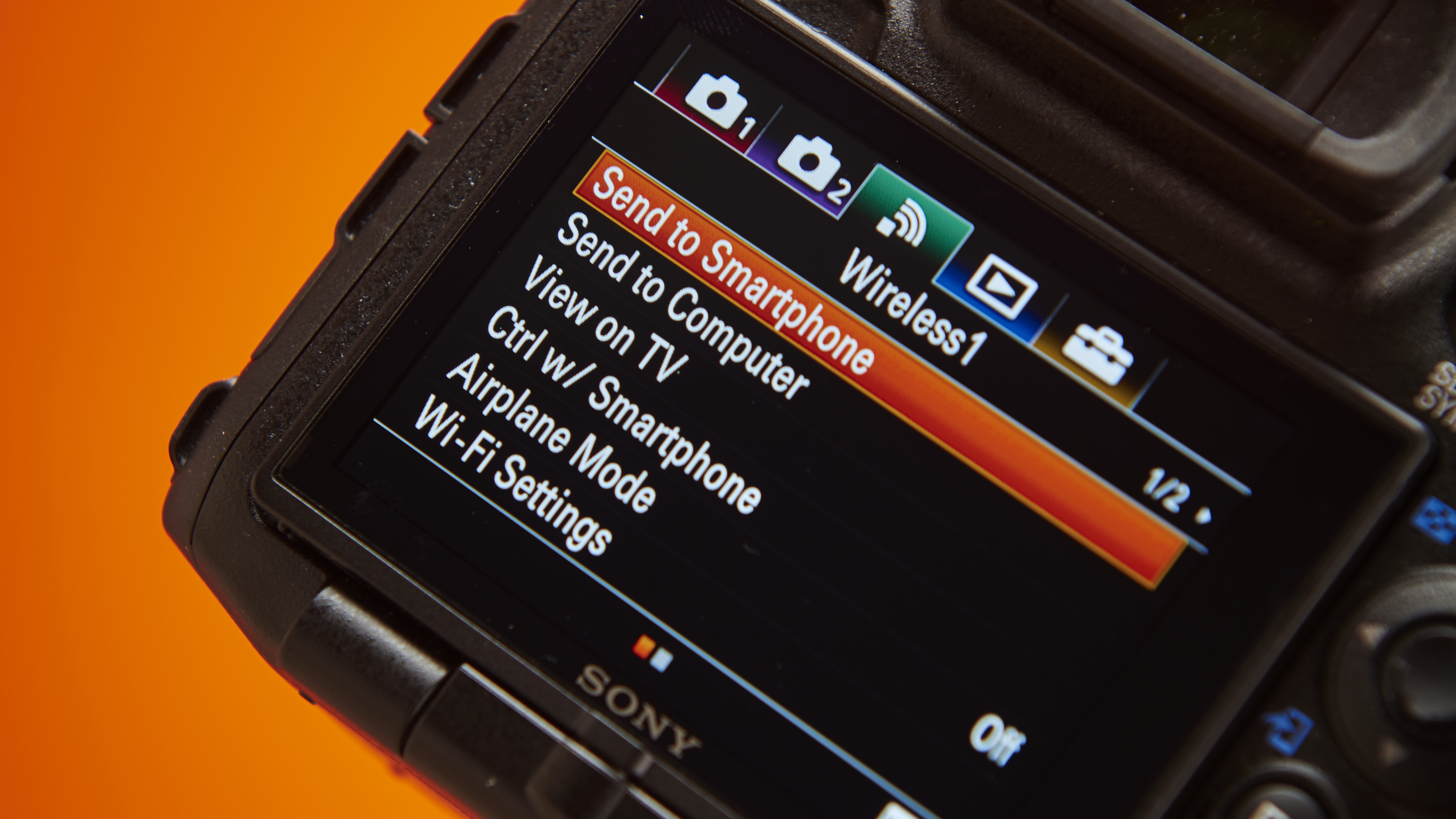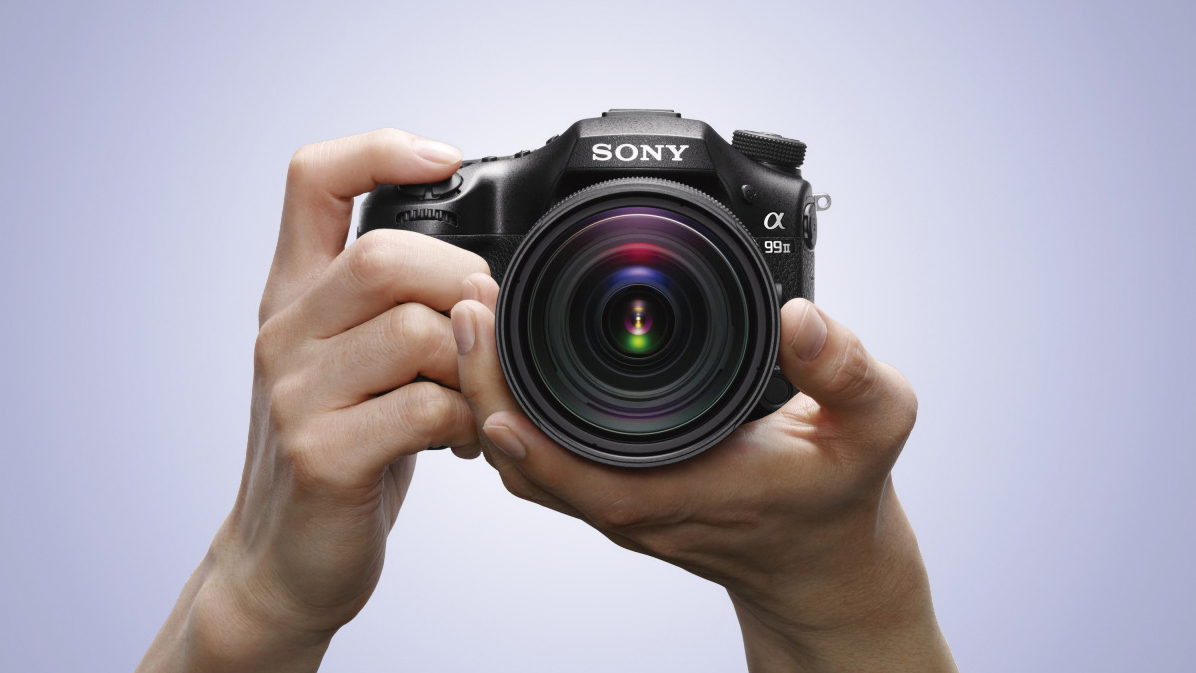Why you can trust TechRadar
Build and handling
- Magnesium alloy body
- Dust- and moisture-resistant design
- Anti-dust sensor protection
The original A99 was a camera that handled very well, with its physical controls logically arranged, clearly marked and pressing well into the body. The new model is said to be around 8% smaller than its predecessor, but given that little else has physically changed between the two, it’s great to find that the A99 II offers much the same positive experience.
Thanks to the arrangement of the controls and the depth of the body itself, the camera sits very comfortably in the hand. This is further helped by the gentle contouring of the grip and the ample room around the rear for the thumb rest. While the camera doesn't have the kind of backlit controls we’re starting to see on models like Nikon’s D500 and D5, the placement of convex buttons next to concave ones goes some way to helping you remember what’s what when using the camera in darker conditions.

The top plate LCD screen is slightly smaller than those on the likes of the Nikon D810 and Canon EOS 5D Mark IV, but the upside here is that this leaves enough breathing space for the controls around it. On the other side of the top plate, the mode dial is tall enough to be gripped comfortably, and its central locking button presses in easily enough to make releasing and turning the dial comfortable – considerably more so than on certain other cameras.
The joystick-type controller on the rear handles menu navigation, focus point selection and image browsing among other things, and for the most part this works very well. It tilts freely to whichever direction you move it, and holding it down allows you to move at speed, be it to shift the focusing point to the other side of the array or zip through a collection of images or menu screens. Given that this is such a key control, those with larger hands may expect something a little larger here, but its size does at least allow for surrounding buttons to be generously proportioned.

One thing Sony has revised for the new model is the shutter mechanism. This is now rated to over 300k actuations, which places it at the same level as many other professional DSLRs. Meanwhile, the self-cleaning sensor mechanism, which tends to work discreetly on many other cameras, vibrates the camera with surprising force on the A99 II. It appears capable of shaking away looser particles, although we still found it necessary to manually intervene during the course of this review by lifting the mirror and using a blower to deal with a few more stubborn ones.
Autofocus
- 4D Focus system
- Hybrid Phase Detection AF system (399 + 72 points)
- -4EV working range
Sony has chosen to include its previously seen 4D Focus technology in the A99 II. Although this has featured inside a number of both mirrored and mirrorless Sony models, this is the first time we’ve seen the system inside a full-frame option from the company.
The camera combines 399 phase-detect points on the main imaging sensor with 79 phase-detect cross-type points on a dedicated AF sensor. This forms a hybrid system, which sees the 79 points working in tandem with those on the main imaging sensor at the same time for superior focusing performance.
From the full array you can call on one of 323 points through the joystick control on the rear. For most purposes, having all 323 addressable points to hand is perhaps not necessary, and can slow you down, while another consequence of having such a saturated array is that most of the points are very small (the most central points are larger). Fortunately, Sony allows you to reduce the array of addressable points down to just 63 or 15, or alternatively to only the cross-type ones in the centre, enabling you to work faster.

For the most part, the A99 II is able to focus swiftly and precisely, particularly when you stick to the most sensitive proportion of the frame. That's not to say you can't find some success with the peripheral points, because you can – just that these are understandably less reliable in more testing conditions. One area where this is apparent is when set to track a moving subject; the central points work manically to keep the subject focused, but adherence isn't quite as strong elsewhere.
One thing that does impress is the camera’s ability to focus in poor lighting conditions. Sony rates the system as having a working range down to -4EV, which is strong for a model of this class. To give this some context, Nikon’s pricier D5 has a -4EV rating, but its Canon EOS-1D X Mark II rival only goes down to -3EV. It's both swift and accurate here when using the central points, understandably hesitating more when faced with a low-contrast subject but often eventually getting it right here too. One quirk is that, when faced with such scenes, the camera has an occasional tendency to take the image when the subject appears to be in focus, without it actually visibly or audibly notifying you that it has achieved this.
Current page: Building, handing and AF
Prev Page Introduction and key features Next Page Performance and image quality